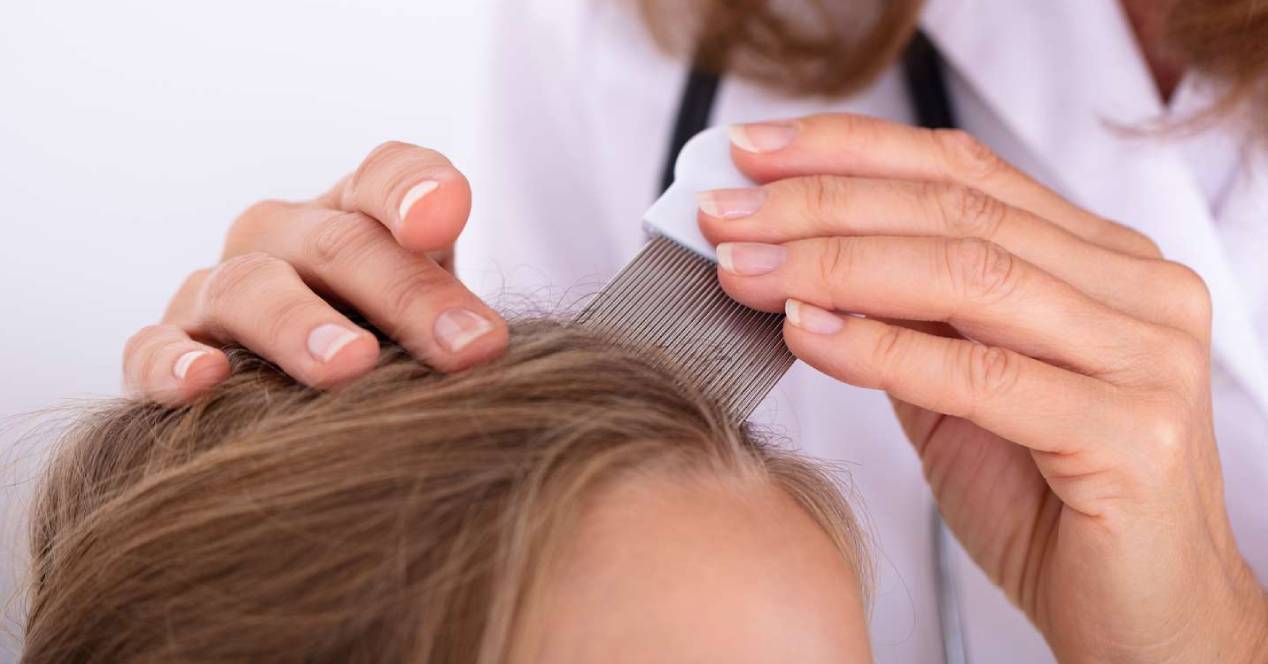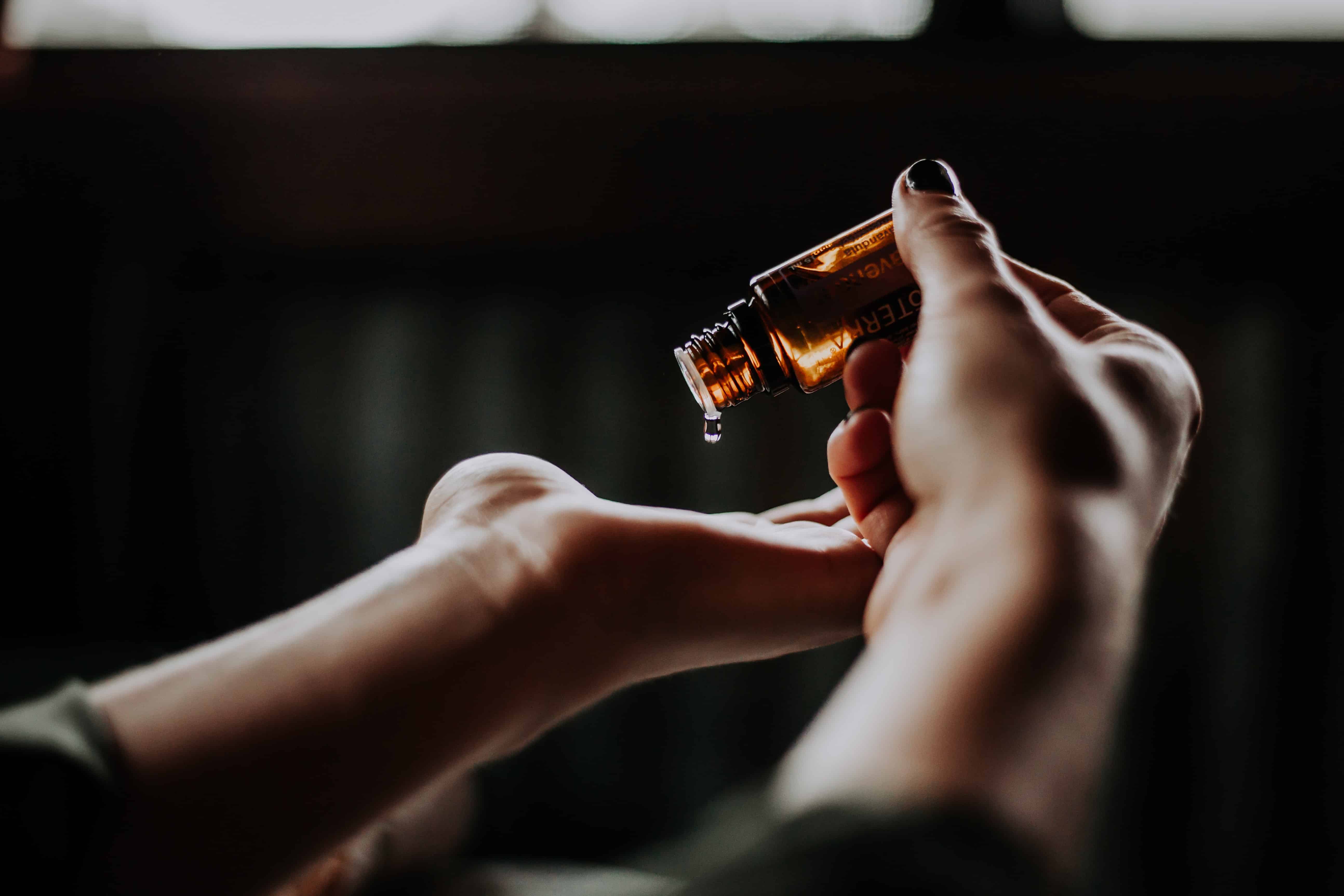
Hearing that someone at our child's school has lice, or finding out that our own child has them, is not pleasant. However, it is more common than we think. Experts estimate that every year, between 6 and 12 million children between the ages of 3 and 12 contract these insects.
Luckily, head lice can be treated through a variety of methods and are easy to get rid of. Their appearance is not related to not being clean people, so anyone can suffer from them. In addition, they do not transmit diseases, beyond an annoying continuous itching on the head.
What are lice?
Lice are small insects called parasites that are transmitted by personal contact, as well as by sharing personal items. Children are particularly prone to contracting and spreading these bugs from their hair.
There are three main types and, although they all come from the same family of parasites, each one is a different species:
- You can find lice on the scalp, neck, and ears.
- Body lice start on clothing or bedding, but move from those places onto people's skin.
- Pubic lice are also called "crabs." They can be found on pubic hair and skin.
El Lifecycle of a louse begins as an egg, also called a nit. The nit is a whitish-yellow spot about 1 millimeter long. Firmly adheres to an individual hair strand close to the scalp. After 7 to 10 days, the nit hatches and becomes what is known as a nymph or young louse. The nymphs usually measure between 1,1 and 1,3 millimeters, and are tan or white in color. The nymphs mature into adult lice in approximately 9 to 12 days.
Mature lice do not tend to grow larger than 2 millimeters, and females are larger than males. Both They live for three to four weeks. As long as a food source is available, an adult louse can live up to 30 days on a human. However, lice can continue to multiply. The females lay up to six eggs each day.
Main symptoms
Some signs of head lice can be noticed right away, especially if our child (or ourselves) doesn't normally have these problems:
- Excessive or abnormal itching of the scalp
- head scratching
- Tingling sensations on the scalp
- Bumps or irritation on the scalp from scratching
- Trouble sleeping, as lice are nocturnal and can be more bothersome at night
- Small yellow or tan dots on the shaft of the hair strands, which may be lice eggs (or nits)
We may not notice head lice symptoms right away. It is not uncommon for children to scratch their heads, and other symptoms can take weeks to appear.
Scratching your head and having small white specks in your hair can also be symptoms of dandruff. Dandruff is a condition in which dead skin cells are shed from the scalp. But if we feel the need to rub the hair and the specks do not fall out of the hair, they may be nits.
As soon as we notice these symptoms, it is advisable to brush the hair with a comb, a magnifying glass and a bright light to find and identify any nits or adult lice. While nits look like tiny dots, adult lice are about the size of a small seed and are usually tan or gray in color.
How do they spread?
Lice do not have wings, so they only crawl. However, they can be surprisingly fast. These are transmitted by direct contact with hair of an affected person. It is common for children to hug and put their heads together. You can't completely avoid this, but watch out for any child who constantly scratches their head or complains of an itchy head.
Lice can also be transmitted by indirect contact with personal items used by the affected person. For example, by sharing hats, scarves, helmets, or caps. Even shared coat racks can harbor lice. It is also important that each child has their own comb or brush, as well as rubber bands and hairpins.
If our son participates in a sport, it is important to make sure he has his own equipment and keep it sanitized. At the pool or gym, make sure he has his own towels and other personal items.

Effective Lice Treatments
If we are concerned about the safety of a lice treatment, natural treatments can also be used. Some research shows that they can be effective in treating infestations. Lice do not live very long without a human host, but they can be easily transferred from person to person through close personal contact. It is important to treat head lice immediately and thoroughly to prevent an infestation.
The medicated shampoos They are designed to kill adult lice and nits, and may contain ingredients such as pyrethrins and pyrethroids. Unfortunately, shampoos that contain pyrethroids are no longer effective in treating head lice. And, it must be taken into account that we should not use medicinal treatments against lice in children under 2 months of age.
over-the-counter treatments
If the infestation is mild, you can treat it at home with an over-the-counter treatment by doing the following:
- Treat dry hair with a special liquid lice medicine called pediculicide. It is available as a shampoo or lotion. Some options include pyrethrin, synthetic pyrethrin, or permethrin. Be sure to carefully read the instructions regarding age and usage requirements.
- We must put on clean clothes once the treatment is finished.
- We will wait 8 to 12 hours to see if the lice and nits have been killed.
- We will use a nit comb (such as a flea comb for dogs and cats) to remove all dead eggs and lice from the hair.
prescription treatments
If we still see moving lice, we will try the treatment again and wait to see if the second treatment is effective. If we still see live lice, see your doctor, especially if we've already tried various over-the-counter treatments.
They can tell us about prescription treatments such as benzyl alcohol or malathion. Children who are at least 6 years old can be treated with malathion and children who are at least 6 months old can be treated with benzyl alcohol.
essential oils for lice
We can also use essential oils in the hair, such as tea tree oil or nerolidol, to help kill lice and nits. You can even try suffocating agents such as olive oil and butter. These can be applied to the scalp and kept on the head overnight under a shower cap to kill lice by suffocating them.
It's important to note that some experts believe that it's actually the combing that does the job: "suffocating" treatments simply stun the lice, making them slower and easier to comb out.

How to know if they have disappeared?
These bugs can cause an itchy scalp, but so can other skin conditions, such as dandruff, eczema, or even shampoo allergies. Therefore, it is important to know how to detect them, especially in children.
It is recommended to wet the hair first. This slows down the lice and makes them easier to detect. Using a fine-toothed comb to part the hair and shining a bright light is the best option for finding lice. If we have lice, we will notice small brown insects the size of sesame seeds moving around or nits that appear to be attached to individual hairs.
Treating head lice can be stressful. Ideally, two weeks after the initial treatments we will be free of insects in the hair. However, it is recommended to check the hair frequently for lice and nits. If after two weeks we still have lice or the scalp appears inflamed or infected, it is recommended to see a doctor. We may need a prescription treatment.
Tricks to prevent its spread
It is not necessary to spray the house and belongings with potentially dangerous insecticides. Lice are "obligate parasites," meaning they do not survive very long without a human host. They die in the 24 to 48 hours after their extraction.
After treating the head and removing all nits, there are several recommended follow-up steps:
- Everyone must change clothes and bedding. These items, as well as hats, scarves, coats and gloves, must be washed in hot water (at least 60ºC) and dried on heat for at least 20 minutes.
- If something can't be machine washed, take it to the dry cleaner. But first, warn the dry cleaning staff about exposing the item to lice.
- Vacuum all chairs, sofas, headboards, and anything that may have come in contact with someone's head.
- Soak combs, brushes, and hair ties in a 10 percent bleach solution for one hour. We can also heat them in water as close to boiling as possible. We can even buy new combs, brushes, and hair ties to make them a safer option.
Since young children are the ones who most often transmit head lice, it can be difficult to take preventative measures. They may not understand the importance of preventing face-to-face contact with other children. However, there are some tricks that we can follow:
- Teach him to avoid head-to-head contact with other people and to refrain from playing or grooming other children's hair.
- Avoid sharing personal care items such as brushes, combs, hats, scarves, and jackets.
- Examine the hair every three or four days if lice have been reported at daycare or school.